Thailand is a country of rich cultural heritage, and its festivals are a testament to its vibrant traditions, deep-rooted spirituality, and love for celebration. These festivals are some of the best ways to experience the country’s unique blend of religious devotion, family values, and joyful festivities. Here’s a guide to Thailand’s most famous festivals, from the water-soaked fun of Songkran to the serene beauty of Loy Krathong.
1. Songkran (Thai New Year)
Date: April 13–15 (officially), though celebrations can last a week in some regions.
Where to Experience: Nationwide, with major celebrations in Bangkok, Chiang Mai, and Pattaya.
What It’s About:
Songkran marks the Thai New Year and is one of the most popular festivals in Thailand. Traditionally, it’s a time to pay respect to elders, make merit at temples, and cleanse Buddha statues with water to wash away bad luck. Over time, this custom evolved into the world’s biggest water fight, with people across the country armed with water guns and buckets, soaking each other in the streets.
How to Celebrate:
- Participate in the water fights: Whether you’re in a major city or a small town, prepare to get drenched. Major streets are often closed to traffic and become battlegrounds for friendly water wars.
- Visit a temple: Despite the fun and chaos, Songkran is a deeply spiritual holiday. Many people visit temples to make offerings, pray, and pour water over Buddha statues as an act of purification.
- Join a parade or beauty contest: Many cities hold cultural parades and “Miss Songkran” beauty pageants during the festival.
Tips:
- Waterproof your belongings and wear quick-dry clothing.
- Be respectful when pouring water on elders, as this is done gently as a sign of respect.

2. Loy Krathong
Date: November (the exact date depends on the lunar calendar).
Where to Experience: Nationwide, with stunning celebrations in Chiang Mai, Sukhothai, and Bangkok.
What It’s About:
Loy Krathong is a beautiful festival that takes place on the night of the full moon of the 12th lunar month. “Loy” means to float, and “Krathong” refers to a small raft made of banana leaves, flowers, candles, and incense. During the festival, people release krathongs onto rivers, lakes, and canals to pay respect to the Goddess of Water and ask for forgiveness for polluting the waterways.
In Chiang Mai and northern Thailand, Loy Krathong coincides with Yi Peng, a festival where thousands of lanterns (called “khom loi”) are released into the sky, creating a magical scene.
How to Celebrate:
- Float a krathong: Buy or make your krathong from biodegradable materials and release it into the nearest body of water, along with a prayer for good fortune.
- Release a sky lantern (Yi Peng): If you’re in the north, particularly Chiang Mai, participate in the Yi Peng festival by releasing a paper lantern into the sky.
- Enjoy traditional dance performances and fireworks: Many towns organize cultural performances, parades, and fireworks along rivers and lakes.
Tips:
- Be mindful of the environment by using natural materials for your krathong.
- Chiang Mai’s Yi Peng celebrations are popular, so plan if you want to attend the mass lantern release.
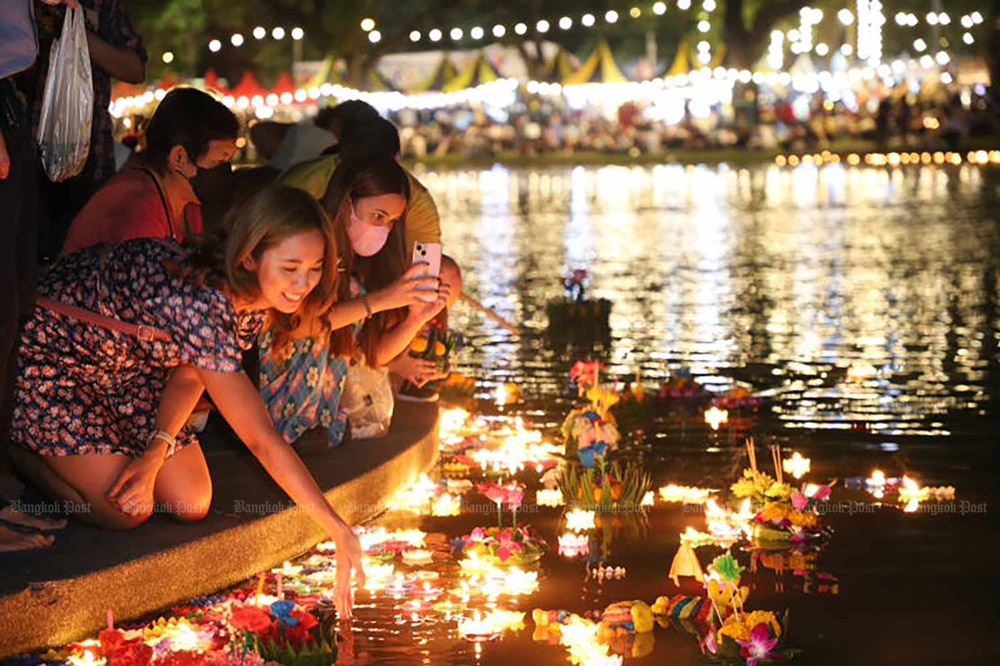
3. Phi Ta Khon (Ghost Festival)
Date: June or July (dates depend on the lunar calendar).
Where to Experience: Dan Sai, Loei Province.
What It’s About:
Phi Ta Khon, also known as the Ghost Festival, is one of Thailand’s quirkiest festivals. It’s part of a larger event called Bun Luang, which celebrates the return of Prince Vessantara, a Buddha-to-be, and his long journey. Villagers dress in spooky, colorful ghost costumes and masks to scare away evil spirits.
How to Celebrate:
- Watch the parades: The highlight of the festival is the lively procession of “ghosts” dancing, playing music, and waving their masks and wooden phalluses, a symbol of fertility and abundance.
- Join in the fun: Visitors are welcome to join the parade and dance with the locals.
- Attend Buddhist ceremonies: After the lively ghost parades, the festival shifts to a more spiritual tone with merit-making ceremonies and prayers at the local temple.
Tips:
- This festival is unique to the small town of Dan Sai, so be sure to plan your trip accordingly.
- Arrive early to witness the mask-making process, as many locals create their intricate masks.
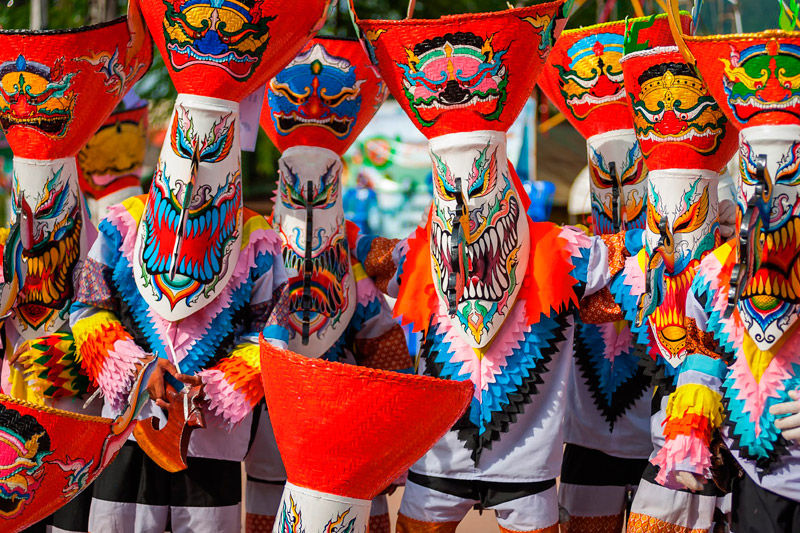
4. Chiang Mai Flower Festival
Date: First weekend of February.
Where to Experience: Chiang Mai.
What It’s About:
Celebrating Chiang Mai’s cooler season and the abundance of tropical flowers, the Chiang Mai Flower Festival is a dazzling display of vibrant blooms, floral floats, and elaborate garden designs.
How to Celebrate:
- Attend the flower parade: The festival’s highlight is the parade of floats decorated with beautiful arrangements of roses, orchids, chrysanthemums, and other flowers native to northern Thailand.
- Visit Suan Buak Haad Park: The park is transformed into a stunning flower garden for the festival, and you can explore various exhibits showcasing local horticulture.
- Take in the beauty of Chiang Mai’s gardens: Many private and public gardens open their doors during the festival, offering a serene escape into nature.
Tips:
- Arrive early to get a good viewing spot along the parade route.
- Take time to stroll through the city’s gardens and parks, which are at their peak during the festival.
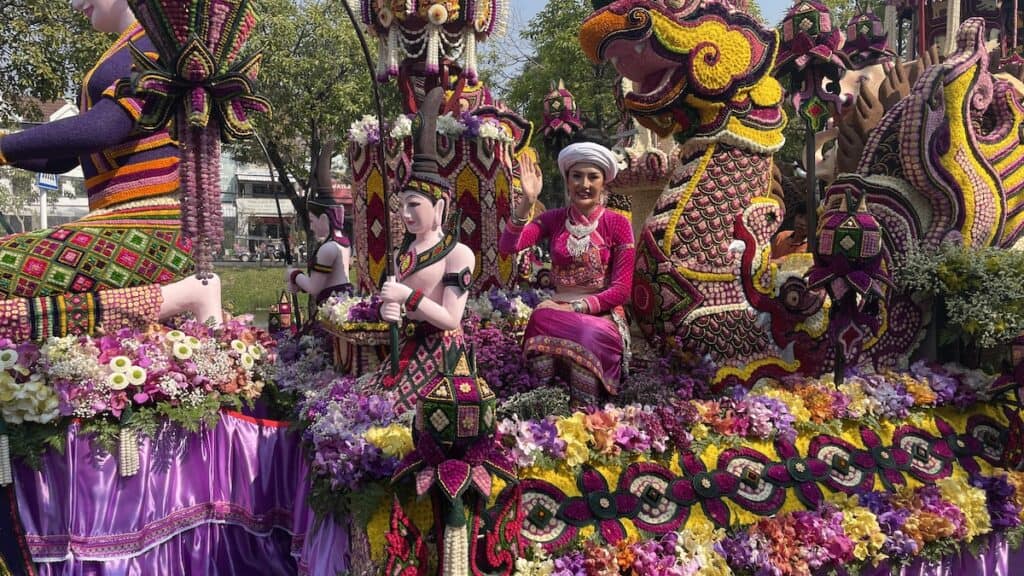
5. Loy Krathong Sai (1000 Floating Lanterns)
Date: November (during Loy Krathong).
Where to Experience: Tak Province.
What It’s About:
This regional variation of Loy Krathong takes place in Tak Province, where locals float small krathongs made from coconut shells in the Ping River. Thousands of these krathongs create a shimmering river of light, offering a stunning visual experience.
How to Celebrate:
- Watch the procession of krathongs: Locals carefully place coconut-shell krathongs in the river, which then form long lines of floating lights.
- Join the community: Visitors can participate in this unique Loy Krathong tradition by floating their coconut-shell Krathong.
Tips:
- If you’re in the northern region during Loy Krathong, Tak’s Krathong Sai is a must-see alternative to the more well-known celebrations in cities like Chiang Mai.
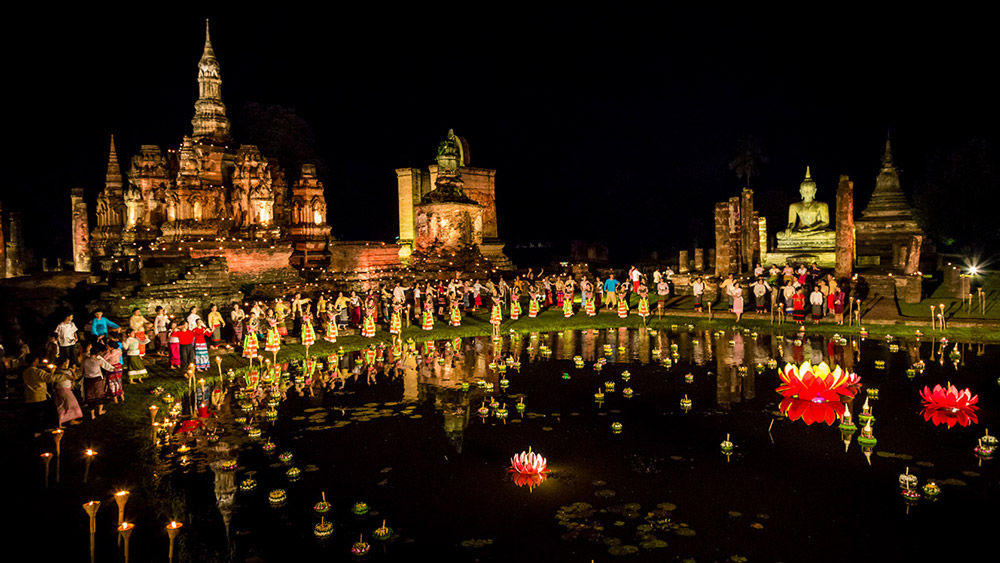
6. Vegetarian Festival (Tesagan Gin Je)
Date: September or October (depending on the lunar calendar).
Where to Experience: Phuket, Bangkok, Trang.
What It’s About:
The Vegetarian Festival is a Taoist celebration in which participants follow a strict vegetarian or vegan diet for nine days to cleanse their bodies and minds. The festival is known for its intense rituals, including self-mortification practices like fire-walking and piercing, particularly in Phuket.
How to Celebrate:
- Try vegetarian food: Food stalls offering delicious Thai-Chinese vegetarian dishes pop up all over the country during the festival.
- Observe the rituals: In Phuket, parades feature devotees walking on hot coals or piercing their cheeks with sharp objects in acts of spiritual purification.
- Make merit: Participate in temple ceremonies and witness acts of devotion from festival participants.
Tips:
- If you’re sensitive to intense rituals, it may be best to focus on the food and cultural aspects of the festival.
- Look for stalls and restaurants displaying yellow flags, which indicate they are offering special vegetarian dishes.
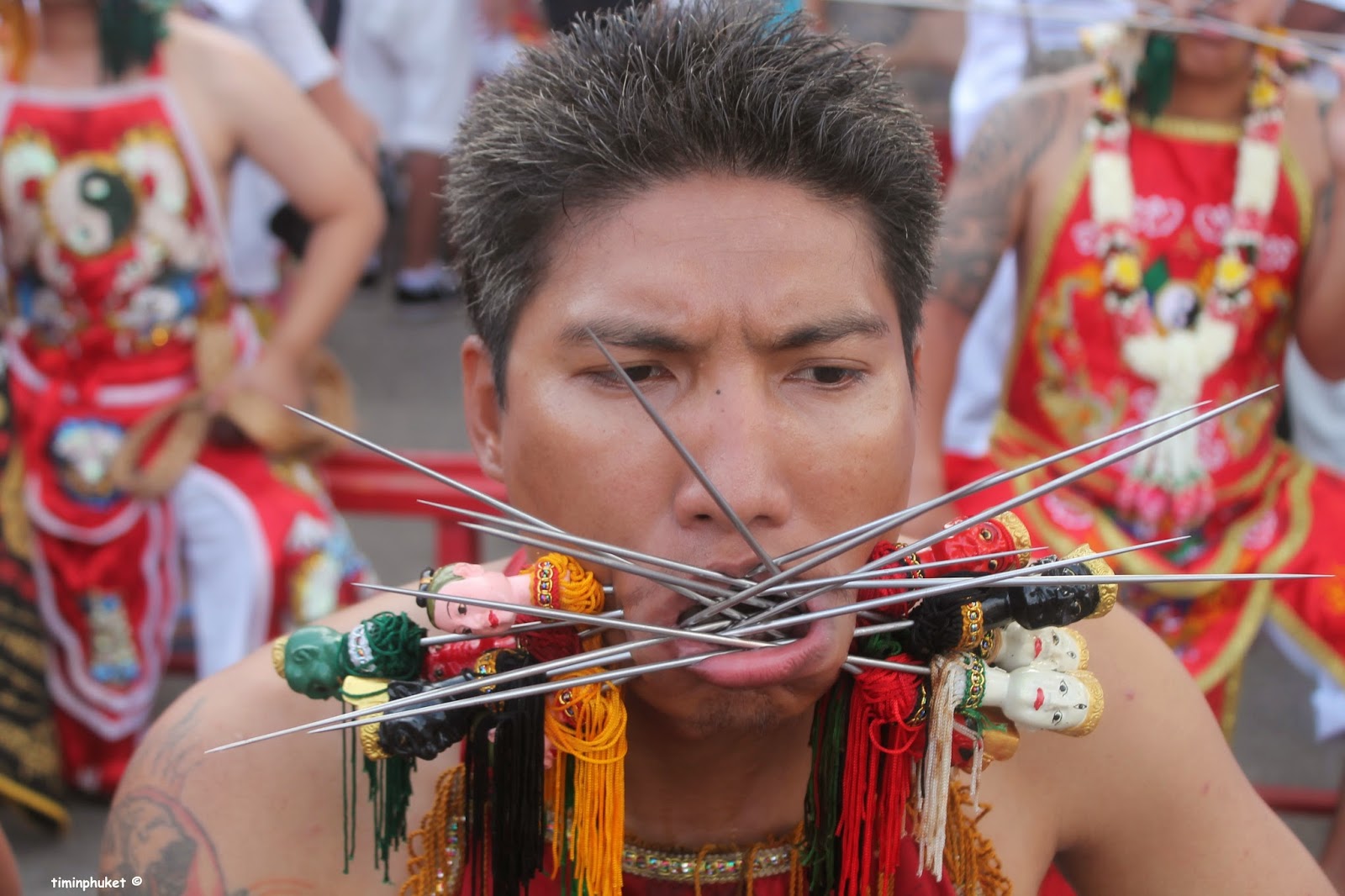
7. Candle Festival (Khao Phansa)
Date: July (on the first day of Buddhist Lent).
Where to Experience: Ubon Ratchathani.
What It’s About:
Khao Phansa marks the beginning of Buddhist Lent, during which monks retreat to their monasteries for meditation and study. In Ubon Ratchathani, the Candle Festival is celebrated with impressive wax sculptures and candlelit processions.
How to Celebrate:
- Admire the candle sculptures: Local artists create intricate wax sculptures depicting Buddhist stories and figures, which are paraded through the streets.
- Attend temple ceremonies: Monks and locals make merit by offering candles to temples, symbolizing light and wisdom.
Tips:
- Ubon Ratchathani is the best place to witness this unique festival, but similar (smaller) celebrations are held in other parts of the country.
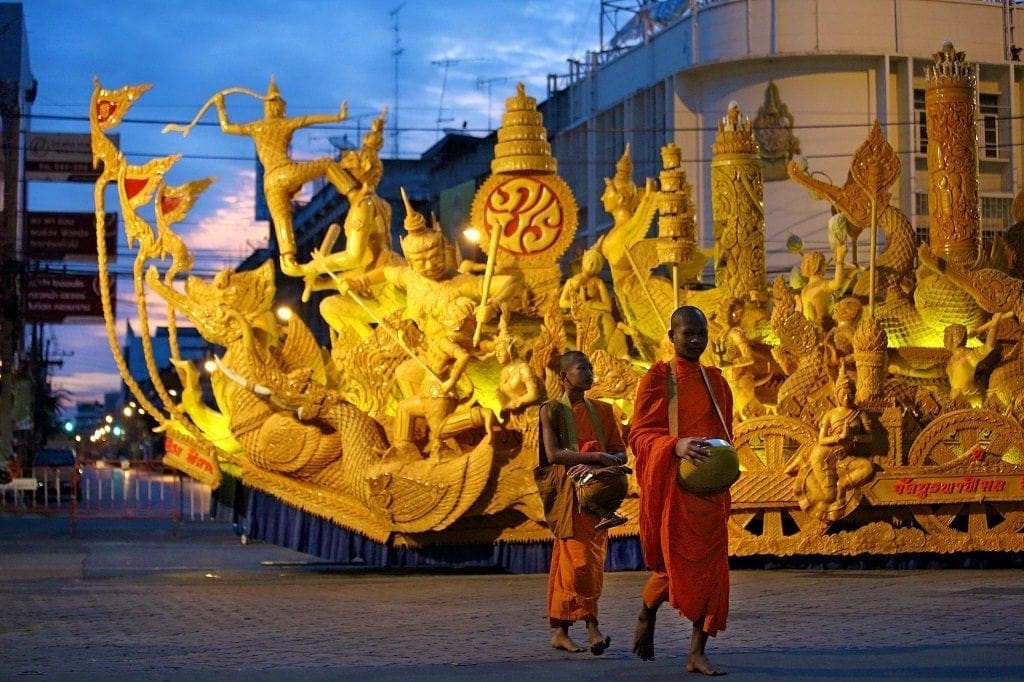
Conclusion
Thailand’s festivals are a beautiful reflection of the country’s culture, spirituality, and love for celebration. Whether you’re getting soaked during Songkran, releasing a Krathong during Loy Krathong, or marveling at the artistic candle sculptures during Khao Phansa, each festival offers a unique way to connect with Thailand’s rich traditions. Plan your visit around these events to experience the country’s true spirit.
